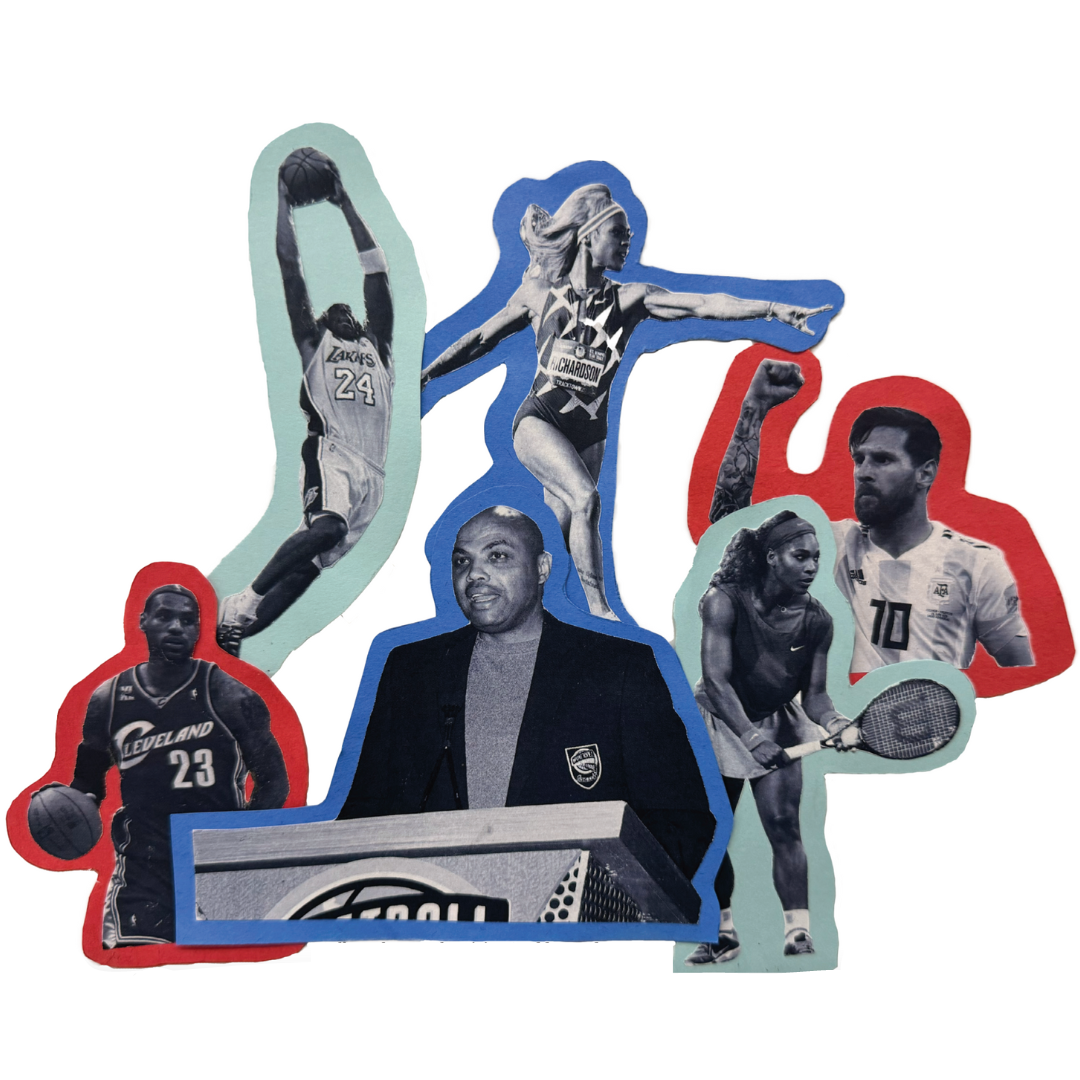“I am not a role model,” NBA Hall of Fame forward Charles Barkley deadpanned to the camera. After a rapid-fire montage of Barkley dribbling, grabbing a rebound and dunking, he paused to deliver a line that sparked controversy across the American sports community: “Just because I dunk a basketball doesn’t mean I should raise your kids.”
While Barkley was correct that professional sportspeople are not substitutes for parental figures, he neglected to note the value of the motivation that they impart to younger athletes. Whether they like it or not, professional athletes are in the national spotlight and must therefore use their platform conscientiously. That being said, younger fans also should observe their athletic role models with a critical eye, learning from their professional and character strengths and taking facts into consideration when controversy arises.
Barkley’s infamous 1993 Nike Air commercial sent shockwaves across the U.S. in an era when children truly saw athletes as heroes to emulate: Air Jordan sneakers were flying off the shelves and Wayne Gretzky was driving the NHL’s increase in popularity. In the decades since Barkley’s declaration, the rise of social media has allowed young players to see more of professional athletes’ lives: Every courageous play or charitable act is magnified tenfold — but so is each mistake and blemish in an athlete’s personal and professional life. This magnification makes it essential that athletes understand their influence on young fans.
Above all else, professional athletes inspire youth through their athletic prowess. Fans are awestruck by their favorite players’ performances on the grandest stages: They seek to mimic their heroes’ signature skills and even their mannerisms. Many young athletes have pretended to be their role models, rewinding highlight tapes on YouTube and then rushing outside to recreate each minute detail.
Beyond technique, professional athletes can also teach younger athletes important life skills. It takes poise, concentration and courage to play in front of tens of thousands of fans (and millions more on television). The stress that athletes face during games is second to none, and overcoming that pressure is an important skill for younger athletes to learn.
Professionals can show young fans how to have fortitude in the face of adversity. In the 2020 European Soccer Championship final between Italy and England, English national team winger Bukayo Saka — only 19 years old at the time — stepped up to take a must-score penalty kick and keep England’s hopes alive. Italy saved the shot, winning the tournament, and Saka faced a slew of racial abuse from angry fans online in the following days. Although the hateful comments affected him, Saka remained positive, posting a letter on social media signed, “love always wins.” Since that Euro final, he has blossomed into one of the world’s best wingers, starting for England in the 2022 World Cup and becoming the face of Premier League club Arsenal. His self-control and mental strength make him an admirable role model, reminding younger fans that athletes are far more than just pixels on a television screen.
While athletes’ positive influences are undeniable, fans must nevertheless recognize that their role models are media-trained individuals in the public eye and adjust their perceptions accordingly.
When professional athletes’ actions become topics of debate, younger athletes should evaluate the facts of the matter and make their own decisions. For instance, U.S. track and field sprinter Sha’Carri Richardson, known for her colorful nails and loud, confident personality, finished first in the 100-meter dash at the 2020 Olympic trials. However, she subsequently tested positive for tetrahydrocannabinol, a Olympics-banned substance. After she received a monthlong suspension that prevented her from participating in the Olympic event, Richardson stated that she smoked cannabis to deal with the emotional stress of her mother’s death. She protested her suspension on grounds of racism, citing a white Russian figure skater who was allowed to compete despite testing positive for a performance-enhancing substance. Following her suspension, however, she was not selected to run in the Olympic 4×100 relay, an event that she would be eligible for since it was scheduled to take place after her ban ended.
Many turned against Richardson after this sequence of events, accusing her of failing to back up her bold behavior with fast times because she wasn’t able to compete. Whether or not younger athletes support Richardson’s attitude and her protests against the ban, they must consult a variety of sources before putting her on a pedestal or condemning her.
Ultimately, younger fans must remember that professional athletes are humans too. Rather than expecting perfection from their role models, they should admire athletes who face adversity or personal struggles and grow from them. When Barkley reflected upon his contentious Nike advertisement in 2019, he revealed that his true intent was to encourage Black children to aspire for success outside of athletics and entertainment. When visiting schools, he noticed that most Black youth he talked to wanted to become professional athletes, and Barkley wished for them to dream of becoming doctors, lawyers and engineers. In his own way, then, Barkley was a role model ahead of his time. By using his platform to deliver a message to youth across the nation, encouraging them to choose meaningful careers where they were underrepresented, he embodied a role model in almost every sense of the word. He just didn’t consider himself to be one.





